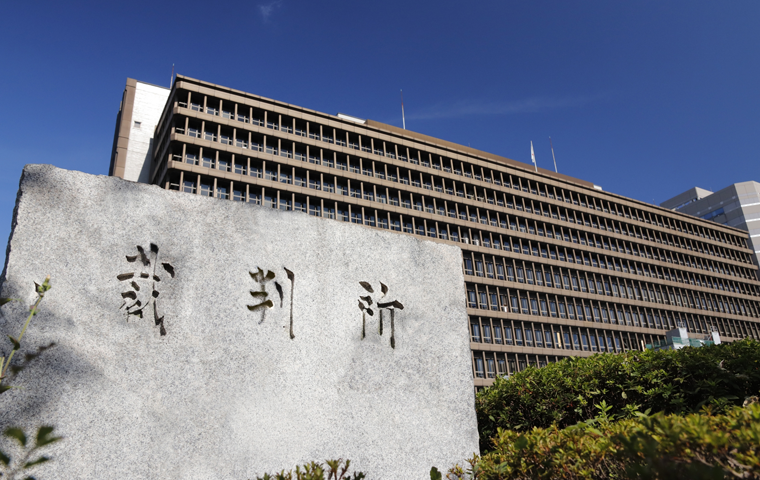Fukushima Nuclear Disaster: Acquittal of Former TEPCO Executives Finalized
Related Articles
The accident at the Tokyo Electric Power Company’s Fukushima Daiichi Nuclear Power Station, which accompanied the Great East Japan Earthquake on March 11, 2011, was an unprecedented disaster that shocked not only Japan but the entire world. Fourteen years after the catastrophe, the criminal trial seeking to hold company management responsible finally reached its conclusion on March 6, 2025. Japan’s Supreme Court dismissed the appeal filed by court-appointed attorneys serving as prosecutors, thereby finalizing the acquittal of two former TEPCO executives. The ruling has drawn intense domestic and international attention as a symbolic judgment of how Japan’s judiciary addresses individual criminal liability in the context of a massive organizational failure.
Criminal Liability Not Found: Supreme Court Finalizes Acquittal of Former TEPCO Management
On March 6, 2025, the Supreme Court upheld the Tokyo High Court’s not-guilty verdict for Ichirō Takekuro and Sakae Mutō, both former TEPCO vice presidents who had been forcibly indicted on charges of professional negligence resulting in death or injury over the Fukushima Daiichi accident, thereby making their acquittal final. The case originally named Tsunéhisa Katsumata, former chairman, among the three defendants, but because Katsumata died in October 2024 while Supreme Court review was still pending, the Court issued its final judgment only for the remaining two.
The charges alleged that, despite being able to foresee the arrival of a massive tsunami, the executives failed to implement measures such as constructing a seawall, resulting in core meltdowns and the deaths of 44 patients from Futaba Hospital who were forced to evacuate, among other harms. However, from the 2019 first-instance ruling at the Tokyo District Court to the 2023 appeal at the Tokyo High Court and now the Supreme Court, the judiciary consistently declined to recognize the former executives’ criminal liability.
This ruling concludes a protracted legal battle that spanned more than a decade, including 37 hearings at the district court alone. Yet the outcome creates a “vacuum of responsibility,” in which no one bears criminal liability for a nuclear disaster that shook the world. Beyond a legal judgment on three individuals, it signals to audiences in and outside Japan the extremely high bar the judicial system sets for imposing criminal punishment on top management amid complex, system-level failures involving corporations, regulators, and natural disasters.
A Case the Citizens Brought: From Extraordinary “Mandatory Indictment” to Courtroom Battle

This historic trial reached the courtroom thanks to a distinctive feature of Japan’s legal system: mandatory indictment initiated by citizens when prosecutors decide not to bring charges. After the accident, more than 13,000 Fukushima residents and others filed criminal complaints against TEPCO officials, but in 2013 the Tokyo District Public Prosecutors Office declined to indict anyone, stating that it was difficult to foresee the specific scale of the tsunami.
Unconvinced, the complainants petitioned the Committee for the Inquest of Prosecution—a panel of eleven randomly selected citizens with voting rights—to review the decision. The committee twice overturned the prosecutors’ decision and voted that the case “should be indicted.” Under the system, two such votes trigger mandatory indictment, whereby court-appointed attorneys act as prosecutors. This was an extremely rare development—only the ninth such case since World War II.
The committee’s reasoning was straightforward: the former executives recognized the possibility of a tsunami threatening the plant’s safety yet postponed countermeasures, and that inaction itself constituted a breach of their professional duty of care. In this sense, the criminal case demonstrated a democratic legal mechanism through which citizens’ sense of justice brought accountability efforts into court after state prosecutors declined to act. Yet the subsequent proceedings highlighted a deep gap between public expectations of justice and the legal interpretations reached by judicial professionals.
The Judicial Hurdle: “Foreseeability” and the Credibility of the “Long-Term Evaluation”
From first instance through the Supreme Court, the decisive issue was foreseeability—whether the former executives could have predicted, at a level that legally obliged the grave management decision to halt reactor operations, the arrival of a tsunami powerful enough to devastate the plant.
Acting prosecutors relied on the “Long-Term Evaluation” of seismic activity published in 2002 by the government’s Headquarters for Earthquake Research Promotion. Based on this, a 2008 internal TEPCO study reported that waves as high as 15.7 meters, exceeding the Fukushima Daiichi site elevation, could strike. The acting prosecutors argued that by then management could specifically foresee the danger.
The courts consistently rejected the Long-Term Evaluation’s sufficiency for criminal liability. While acknowledging it deserved some respect as scientific knowledge, the judgments found it too abstract to establish the concrete and imminent danger required to impose criminal punishment. Under the strict criminal standard of proof—beyond a reasonable doubt—the judiciary concluded it could not determine that the executives were legally obligated to suspend operations based on foreseeability.
What accentuates the uniqueness of this outcome is a contrasting civil judgment. In a shareholders’ derivative suit seeking damages from the former executives, the Tokyo District Court in 2022—relying on the same Long-Term Evaluation—found the tsunami foreseeable and ordered a record 13 trillion yen-plus in damages (a ruling later overturned on appeal). The divergence between criminal and civil outcomes clarifies a jurisprudential “fault line”: Japanese courts are extremely cautious about criminally punishing top managers for failures in addressing massive corporate risks, while comparatively more willing to impose civil liability for breach of duty.
The Ruling’s Ripples and Japan’s Future: Implications for Nuclear Policy and Corporate Governance

Plaintiffs and supporters condemned the finalized acquittal as an “unjust ruling.” They argue the judiciary betrayed public expectations and obscured the attribution of responsibility, vowing to continue communicating the facts revealed in court to society.
The decision coincides with a significant policy shift by the Japanese government toward a return to nuclear power, citing energy security and decarbonization: restarting idled reactors, extending the operation of plants beyond 60 years, and even considering next-generation advanced reactors.
Experts and critics worry the ruling sets a dangerous precedent. By setting the threshold for foreseeability extremely high, future industrial accidents may allow top executives to escape criminal liability by invoking the “unforeseeable” defense. This could blunt incentives for robust safety measures in high-risk sectors and hollow out corporate governance.
Ultimately, the ruling may exert broad effects beyond the courtroom. If nuclear operators perceive that the risk of criminal punishment is effectively reduced, the decision could act as a tailwind for the government’s nuclear policy. A single judicial judgment thereby influences the nation’s energy trajectory. The Fukushima criminal trial leaves not only the unresolved question of individual responsibility, but also a sober reminder of the weight judicial decisions can carry for Japan’s future.



